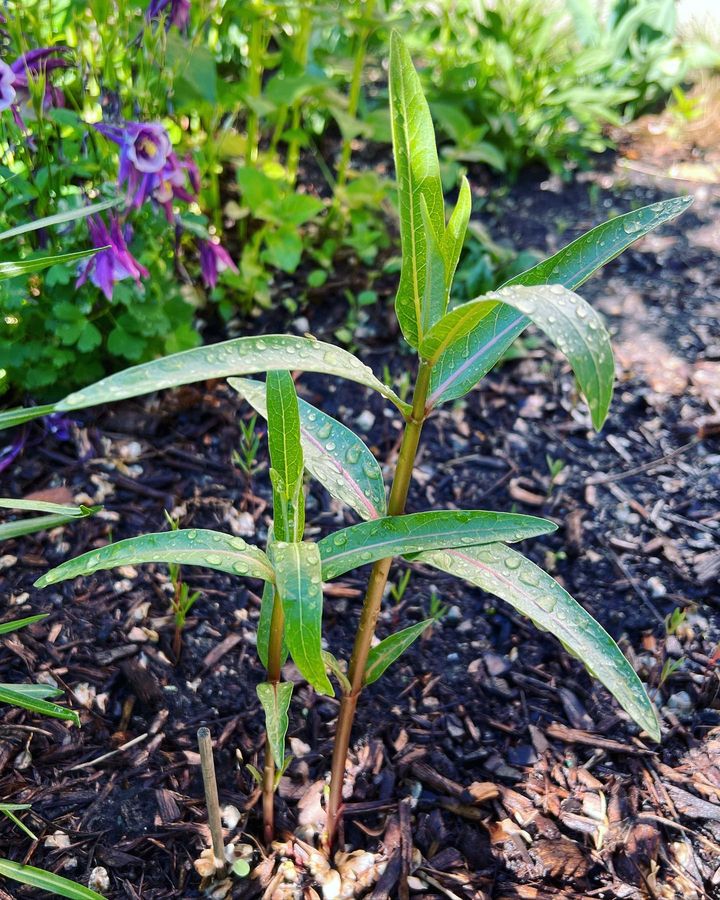Do you know Milkweed leaves are the only food of the Monarch larvae and nectars of bloom for the adult ones?
Thus, read on till the end to learn about bloom time and the top ways to make Milkweed rebloom.
Table of Contents Show
Does Milkweed Bloom The First Year?
A classic American wildflower, Milkweed (Asclepias) is a herbaceous perennial profusely loved by Monarch butterflies.
Milkweed, perfect for butterfly gardens, grows relatively fast from seeds and sprouts within a week or 7-12 days.
The new juvenile Milkweed plants focus their energy on roots and overall plant growth instead of flowering.
Moreover, Monarch caterpillars can delay endearing Milkweed blooms by feasting on such young plants.

Nevertheless, Milkweed species like Swamp, Showy, and Butterfly Milkweed do not bloom the first year and can take 2-3 years to flower.
Thus, do not worry and wait patiently if your Milkweed is not flowering the first year.
Instead, ensure young Milkweed plants are outdoors for 6-8 hours of full sunlight aided with nutrient-rich soil.
When Does Milkweed Bloom?
Within 2-3 years, Milkweed plants attain an astounding maturity height of 2-4 feet with strong root establishment.
The vibrant Milkweed flowers are a cluster of waxy white, pink, green, purple, and red star-shaped blooms.
You can expect all Milkweed species to produce such flowers from late spring to the end of the summer.
Remember, the flowering period slightly differs depending upon the USDA zone and Milkweed species.
| States | USDA Zones | Flowering or Blooming Period |
|---|---|---|
| Florida | 8-11 | May-July |
| Massachusetts | 4-7 | Late June to August |
| Michigan | 4-6 | May to September |
| Ohio | 5-7 | Mid-June to August |
| Texas | 7-10 | June to October |
Meanwhile, Swamp and Whorled Milkweed blooms a little later from July until August.
After flowering, the plant produces seedpods of length 3-5 inches and proceeds to self-seed in the fall.
Having that said, they are not invasive and do not impart a danger to other native plants.
How To Make Milkweed Rebloom?
While patiently waiting for the first two years of no bloom to pass, you can encourage flowering later via excellent care.
Thus, here are a couple of things you can perform to encourage better flowering of Milkweed.
- Plant Milkweeds in a sunny spot with at least 6-8 hours of direct sunlight, and avoid planting them in shady areas.
- Aim to deeply water outdoor plants daily or every other day to keep the soil moist but not soggy in the earlier growth stage.
- Use well-draining, porous, nutrient-rich soil and incorporate the best composts.
- Feed them with bloom booster, all-purpose, or balanced 10-10-10 slow-release fertilizer once a month during the early spring to boost plant growth.
- Add mulch atop the plants in a donut fashion without touching the stem to avoid stem rot issues.
- The soil can become compact with time so till the soil occasionally.
- Regularly deadhead spent flowers and prune damaged, dying foliage using sterilized pruners.
- Inspect the plant for pest invasion and prune the infected parts.
Although insecticides and fungicides can keep the Milkweeds safe from pest and fungal issues, they can kill innocent Monarch Butterflies.
Thus, aim for organic ones to keep pests away without causing detrimental effects on butterflies.
Editor’s Note
Safe, Noninvasive Plant But Poisonous!
Though Butterflies love to suck on the nectar of the blooms, all parts of Milkweed are toxic and poisonous to humans and pets.
Thus, beware of the Milkweed’s slow but self-spreading nature and keep them away from kids and pets.
All The Best!


